Fortis Space-Tests its New Werk 17 Movement
Why not send a watch to the edge of space?
Field-testing is something we talk about regularly, but we rarely test a watch beyond normal, everyday use. Sure, on occasion, we send a dive watch into the depths of the ocean on the wrist of our resident diver, but that’s about it. The (sad) reality is that most testing takes place in boring, sterile laboratories under very specific conditions. Yet, there’s something immensely cool about pushing a watch, or movement for that matter, to the extreme in a real-world situation. Case in point, the Werk 17 manufacture chronograph calibre developed by Fortis. Closely tied to aviation and space in its own right, the brand has now sent a batch of this new manufacture movement into the stratosphere to see how the watches hold up.
November 2021, Kiruna, Sweden. This location is home to the Esrange Space Centre, a facility used by the Swedish Space Corporation. Initially dedicated to scientific research on the Aurora Borealis phenomenon, it is now also used to launch helium balloons, rockets and satellites into the stratosphere and beyond. And this is exactly the reason why Fortis has travelled this far north and put its new Werk 17 to the test. And Fortis is no stranger to watchmaking dedicated to space, as evidenced by the Official Cosmonauts Chronograph Amadee-20 and other space-related watches.
In all honesty, it’s not the first time a watch, and therefore a mechanical movement has been sent into space. I probably don’t need to remind you of the whole Speedmaster and Apollo 11 saga. And most of you will remember Felix Baumgartner, who in 2012 jumped, JUMPED, from a height of 39kms down to Earth with a Zenith El Primero Stratos Flyback Striking 10th on his wrist!
Nevertheless, what Fortis has done is actually very cool and does provide vital real-world data on the performance of the new Werk 17 movement. About six months ago, Fortis and SSC strapped 13 encased movements to a special gondola. The gondola was equipped with all sorts of sensors and cameras to monitor the movements during flight. The gondola was then suspended underneath a helium balloon calculated to reach a peak altitude of 30kms. The ride up looks fairly calm, but temperatures can plummet to -60°C, so it’s not something to be taken lightly.
And then the moment comes when the balloon bursts and the cradle plummets back to Earth at breakneck speed. A parachute is used to control the fall, but the fall looks quite rough and violent, judging from the footage (see video above). Once it reached Earth, it seemed that all the movements were running quite well actually, despite crashing into a tree. Upon first inspection, everything seemed fine, with just two of the thirteen movements performing below expectations. The others still performed perfectly. The movements were then taken back to Grenchen, Switzerland, to be taken apart, checked and tested for accuracy once more.
But the story of the Werk 17 and its space-flight doesn’t end there. Jupp Philipp, the current owner of Fortis, is planning to send the Werk 17 into open space on a rocket in 2022 and even has ideas beyond that as well. It all sounds very intriguing to us.
At the moment, not much more information is available, other than that the Werk 17 is a column-wheel operated chronograph movement with automatic winding and 60 hours of autonomy, and with an obvious relation to the 7750 base and probably the involvement of La Joux-Perret in the development (some of the parts, like the atypical column-wheel, leave few doubts about its provenance). But whenever Fortis comes out with a new chronograph watch fitted with a Werk 17 movement, you can tell your mates it has been properly tested in space and survived. It is reassuring to see the movement’s construction can hold its own in extreme temperatures, vibrations and shocks during its adventure to the edge of space, right?
For more information, please visit Fortis-Swiss.com.


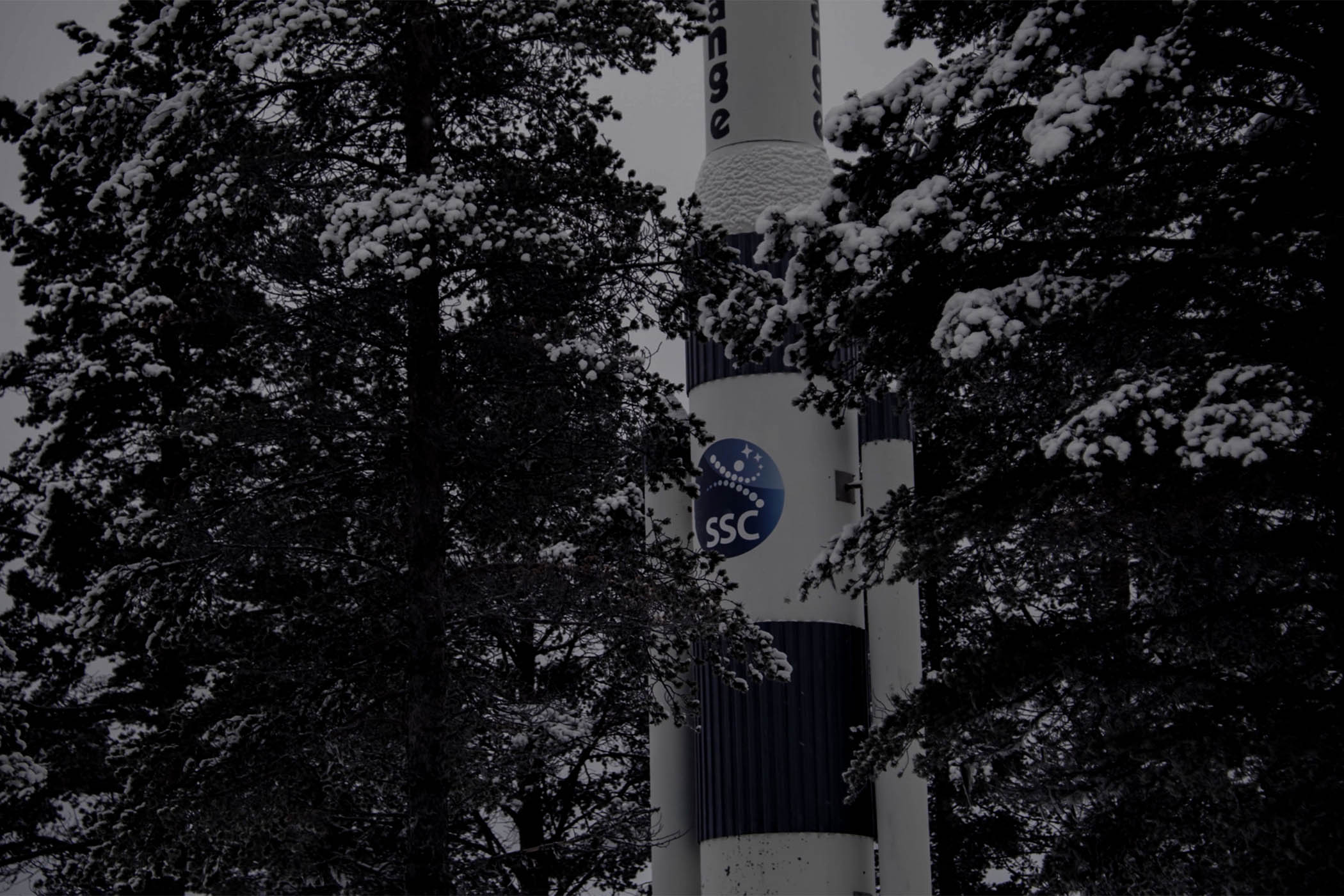
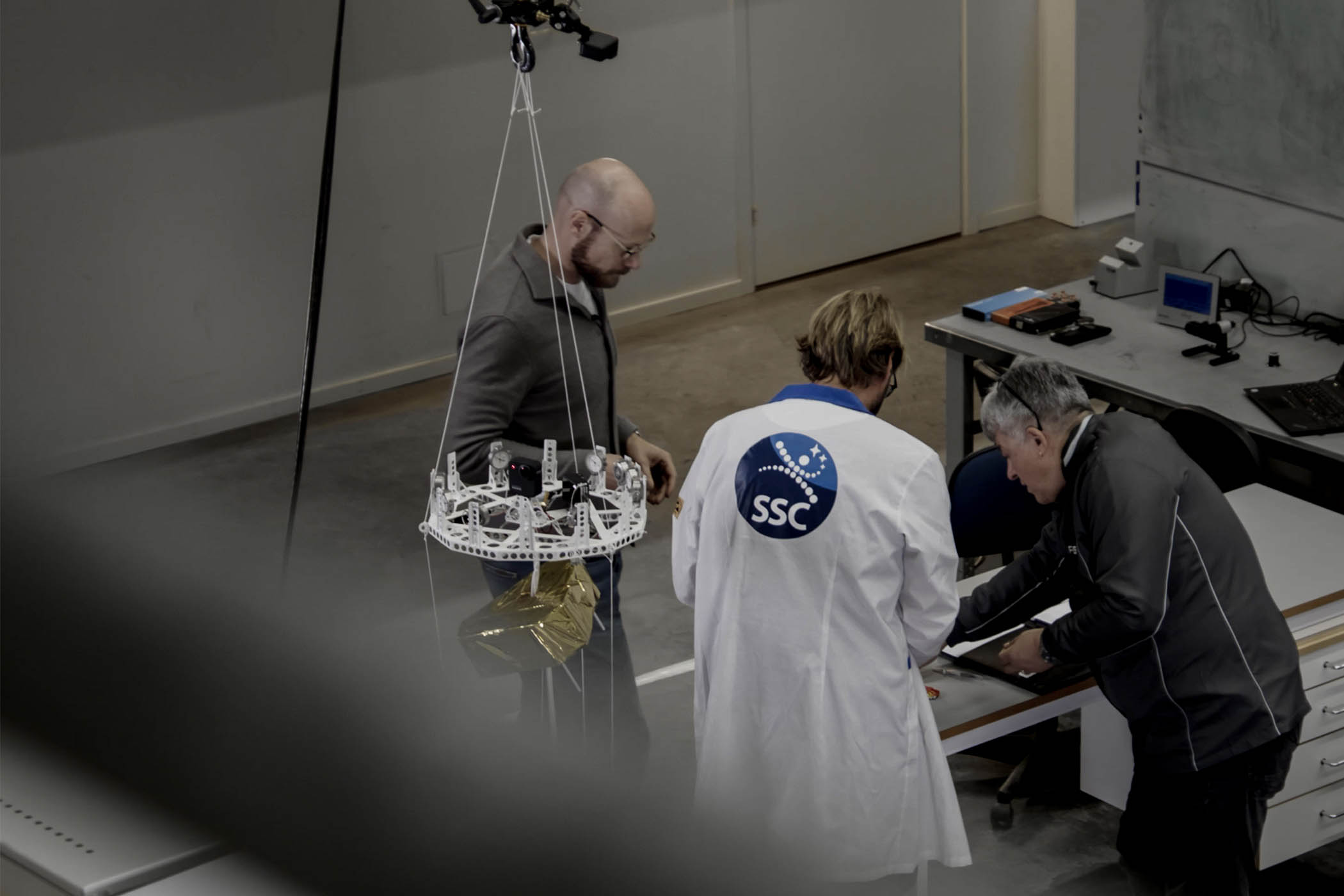
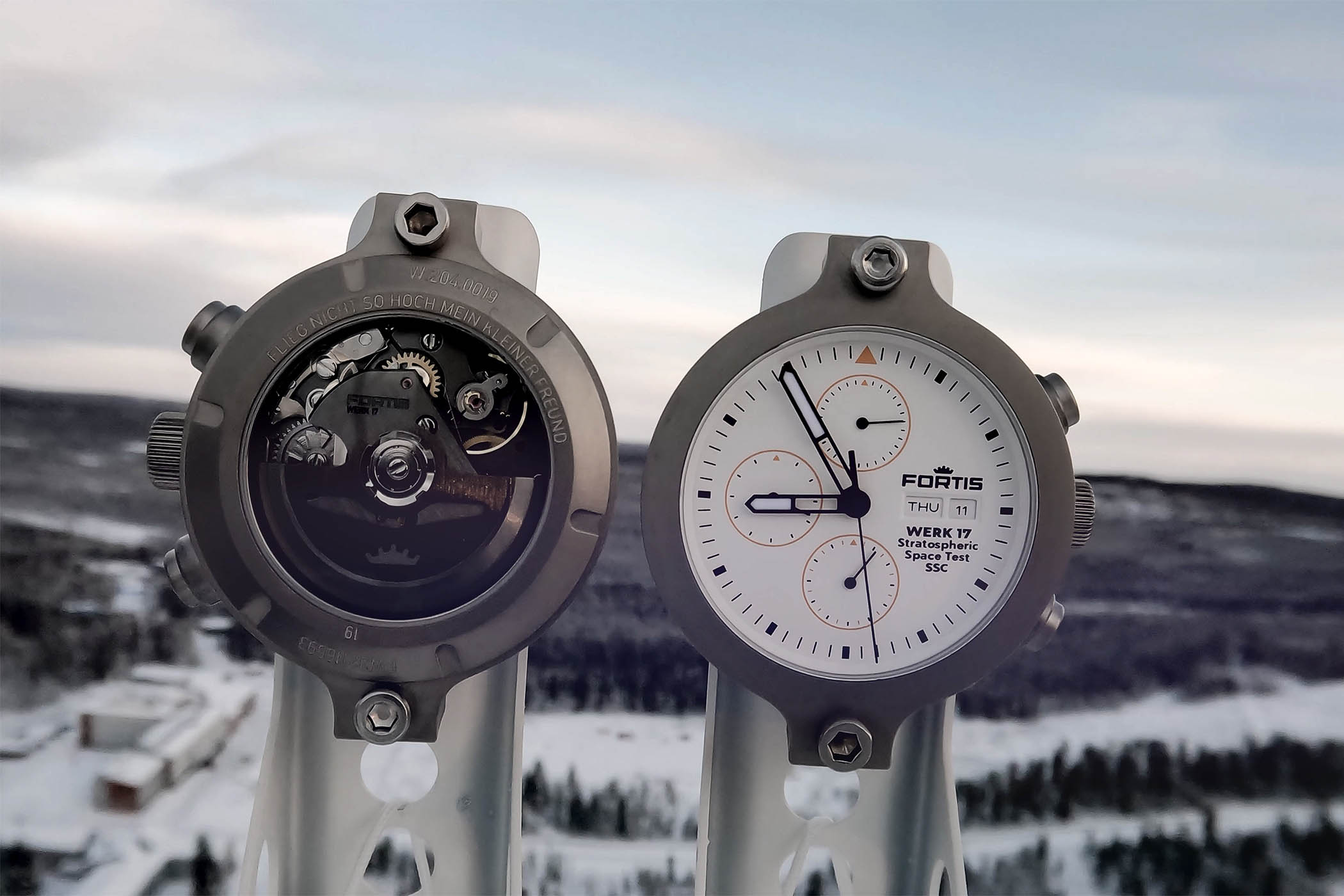

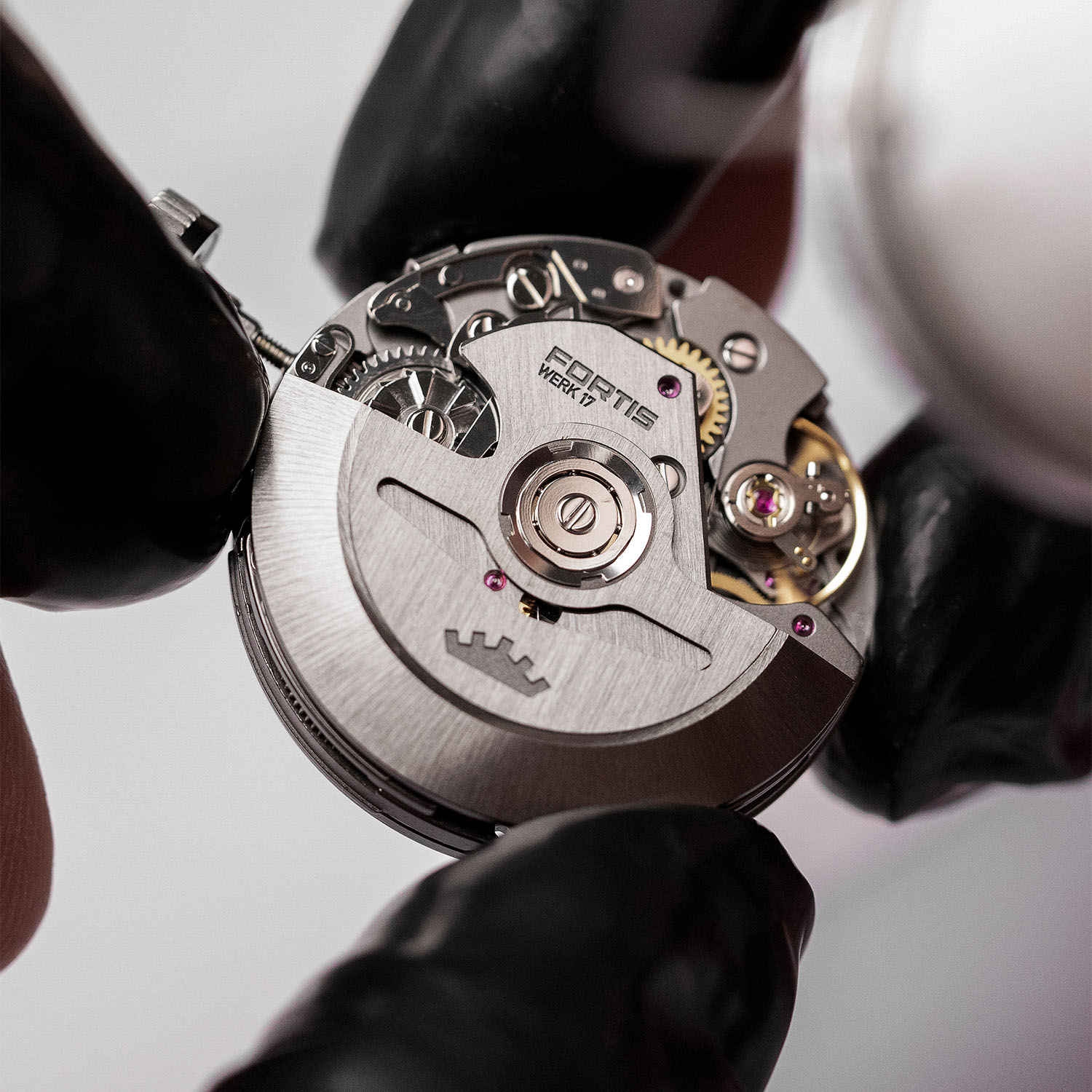
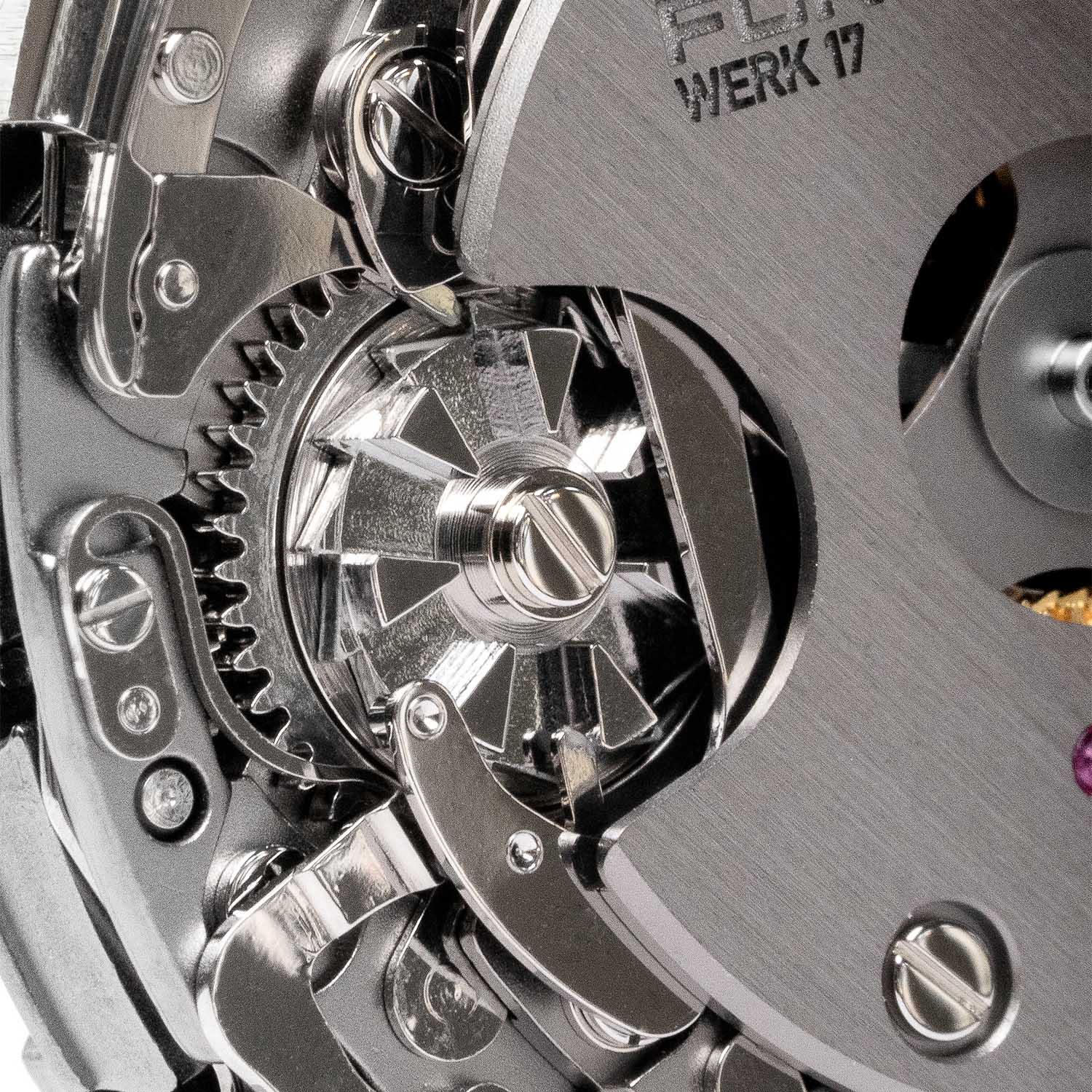
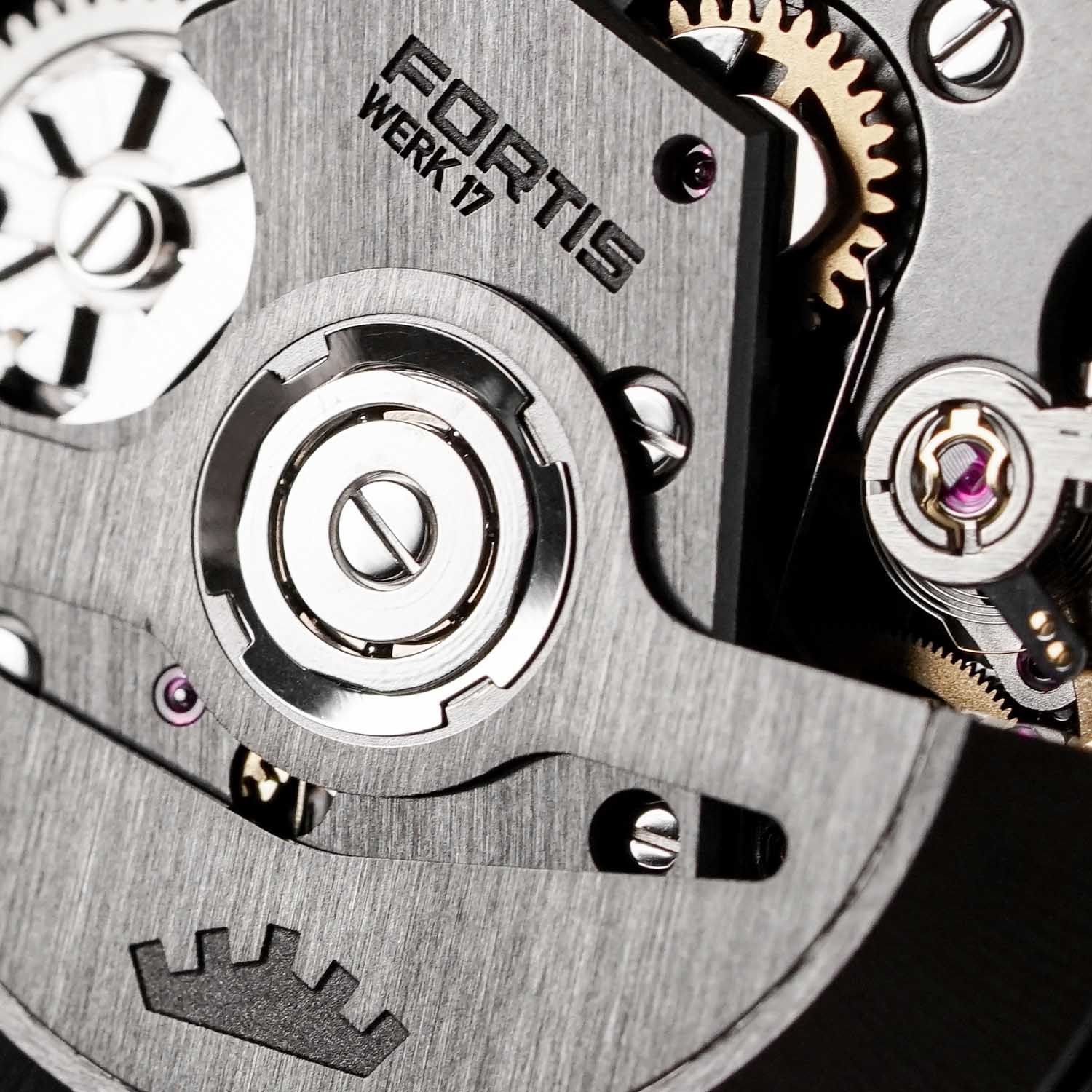
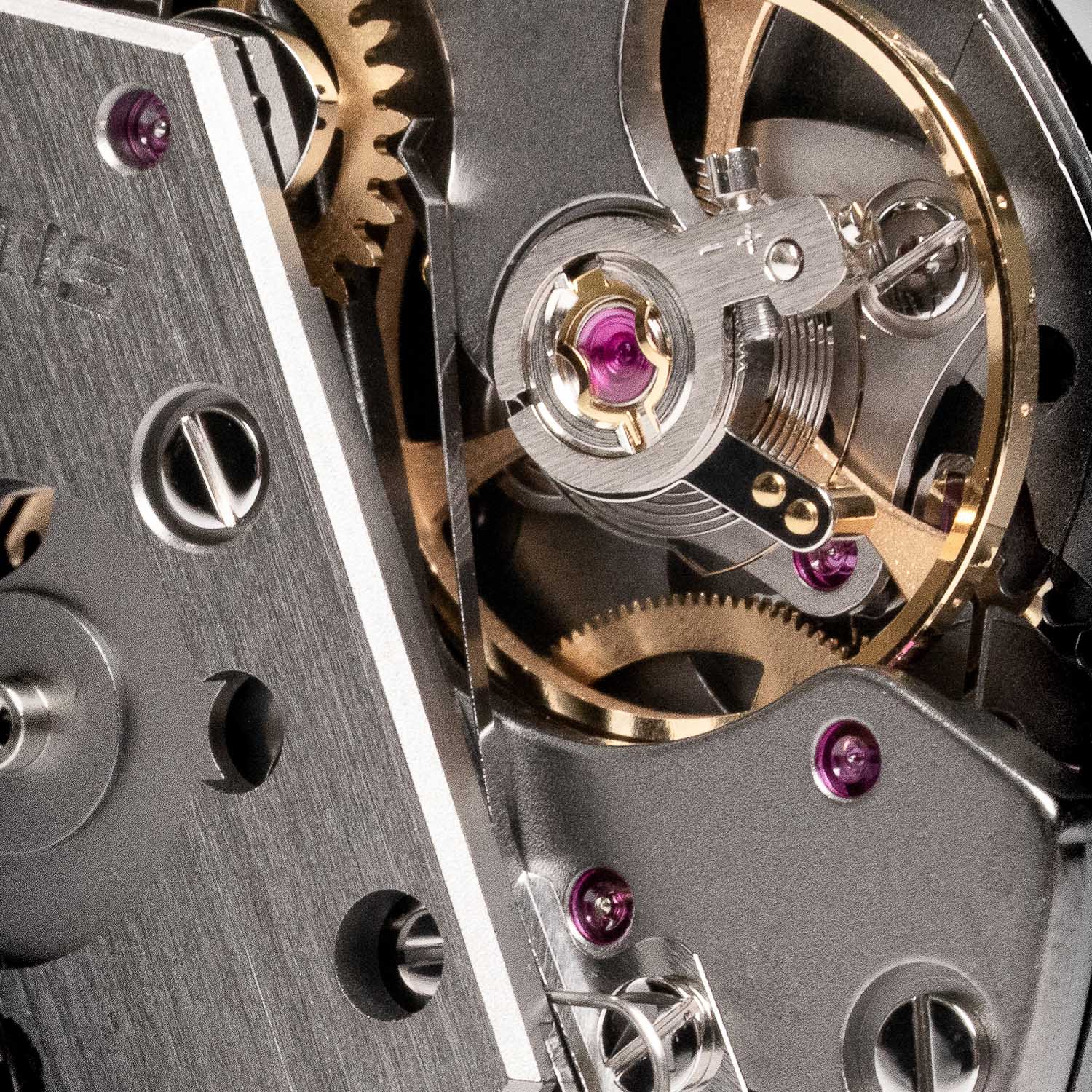



5 responses
I wonder whether it was really necessary to cut down a tree to recover the cradle…Especially for a test which looks more a marketing move rather than real need. I’m surely not a “green warrior” and love Fortis as a brand, but I found this video disappointing.
Best regards,
Andrea
“and with an obvious relation to the 7750 base and probably the involvement of La Joux-Perret in the development (some of the parts, like the atypical column-wheel, leave few doubts about its provenance)”
I’d go further than that and say it’s a dead ringer for the LJP L100.
That’s the first time a watch brand does that! Absolutely awesome and actually a great example of creating something truly robust. We all want robust timepieces and what’s better than testing in in the most harsh conditions to make them as robust as possible.
from there Website: “On top of the successful collaboration with Kenissi, we are now closely working with Manufacture La Joux-Perret and adding the WERK 17. Another manufacture calibre ensuring precision and durability for our tool watches.” So after Kenissi Movements La Joux-Perret one’s are also called manufacture calibre by the watch manufacturers. Strange watch world!!!
LJP sigue bajo el guantelete de Citizen.